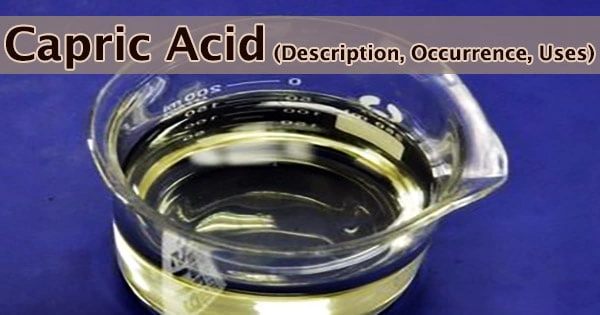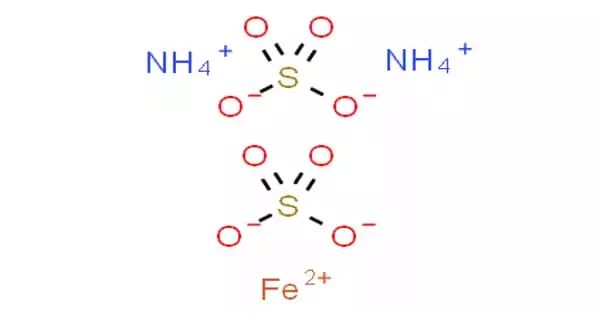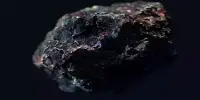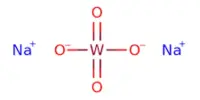Capric acid, commonly known as decanoic acid or decylic acid, is a 10-carbon saturated fatty acid. Coconut oils, palm kernel oil, and cow/goat milk all contain it naturally. Its formula is CH3(CH2)8COOH, and it is a saturated fatty acid. The cosmetics and personal care, food and beverage, and pharmaceutical industries are the most prevalent users of capric acid.
31.5°C melting temperature; non-toxic; soluble in most organic solvents and dilute nitric acid. Caprates or decanoates are the salts and esters of decanoic acid. Capric acid gets its name from the Latin “caper / capra” (goat), because the chemical has a sweaty, unpleasant odor that reminds people of goats.
This acid functions as an antibiotic, anti-inflammatory, human metabolite, volatile oil component, plant metabolite, and algal metabolite, among other things. Capric acid is found naturally in coconut oil (about 10%) and palm kernel oil (about 4%), but it is not found in most seed oils. It’s found in the milk of numerous animals, as well as other animal fats to a lesser amount.
It also contains 1.62 percent of the lipids found in the fruit of the Durio graveolens durian species. It is a medium-chain saturated fatty acid with a straight chain. It is a decanoate conjugate acid that comes from a decane hydride. Caproic acid (a C6:0 fatty acid) and caprylic acid are two additional acids named after goats (a C8:0 fatty acid). These make up 15% of goat milk fat, together with capric acid.
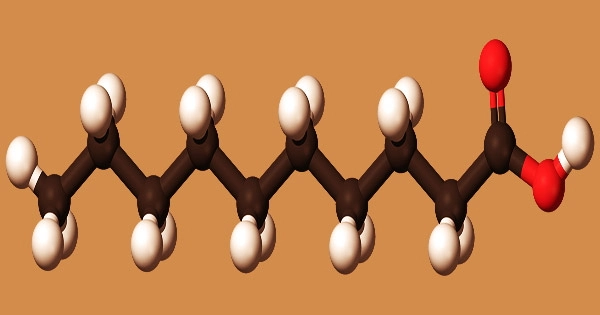
To neutralize bases, capric acid reacts exothermically. When it comes into contact with active metals, it produces gaseous hydrogen and a metal salt. Capric acid can absorb enough water from the air and dissolve it to corrode or dissolve iron, steel, and aluminum parts and containers.
To make gaseous hydrogen cyanide, it reacts with cyanide salts or solutions of cyanide salts. To produce flammable and/or poisonous gases, it reacts exothermically with diazo compounds, dithiocarbamates, isocyanates, mercaptans, nitrides, and sulfides. Sulfites, nitrites, thiosulfates (to produce H2S and SO3), and dithionites (SO2) can all react to produce combustible and/or hazardous fumes and heat.
When carbonates and bicarbonates react, a harmless gas is produced (carbon dioxide). Can be oxidized exothermically by powerful oxidizing agents and reduced exothermically by strong reducing agents, resulting in a wide range of products. Among other materials, it can trigger polymerization reactions or catalyze (speed up) reactions.
Capric acid is used to create esters for perfumes and fruit flavors, as well as a food-grade additive intermediate. It’s a carboxylic acid microbiocide that’s utilized by food processors and dairy producers for cleaning, sanitizing, and disinfecting. Sol in ethanol, ether, chloroform, benzene, carbon disulfide, and dilute nitric acid; practically insol in water (0.015 g/100 g at 20 °C); sol in ethanol, ether, chloroform, benzene, carbon disulfide, and dilute nitric acid.
Capric acid is made by oxidizing the main alcohol decanol with a chromium trioxide (CrO3) oxidant in an acidic environment. Conversion of the acid into its methyl ester, b 114.0o/15mm, is the best way to purify it (using excess MeOH, in the presence of H2SO4).
The ester is distilled in vacuo through a 3ft column filled with glass helices after the H2SO4 and MeOH are removed. Saponification and vacuum distillation are then used to extract the acid from the ester.
Capric acid is utilized in the production of perfumes, lubricants, greases, rubber, dyes, plastics, food additives, and pharmaceuticals, as well as in organic synthesis. This acid is a carboxylic acid that is organic. Sulfuric acid, caustics, ammonia, aliphatic amines, alkanolamines, isocyanates, alkylene oxides, and epichlorohydrin should all be avoided. Most common metals are attacked by this corrosive solution.
It creates bitter smoke and unpleasant smells when heated to break down. Strong oxidizers, such as bromine, 90% hydrogen peroxide, phosphorus trichloride, silver particles, or dust, cause violent reactions.
Capric acid may be responsible for the mitochondrial proliferation linked to the ketogenic diet, and this could happen through PPAR receptor agonism and its mitochondrial biogenesis target genes.
Information Sources:
